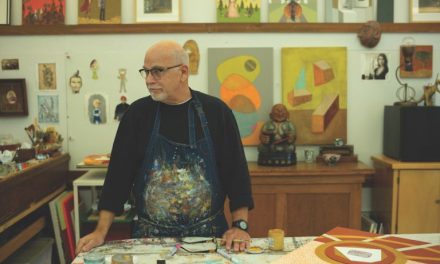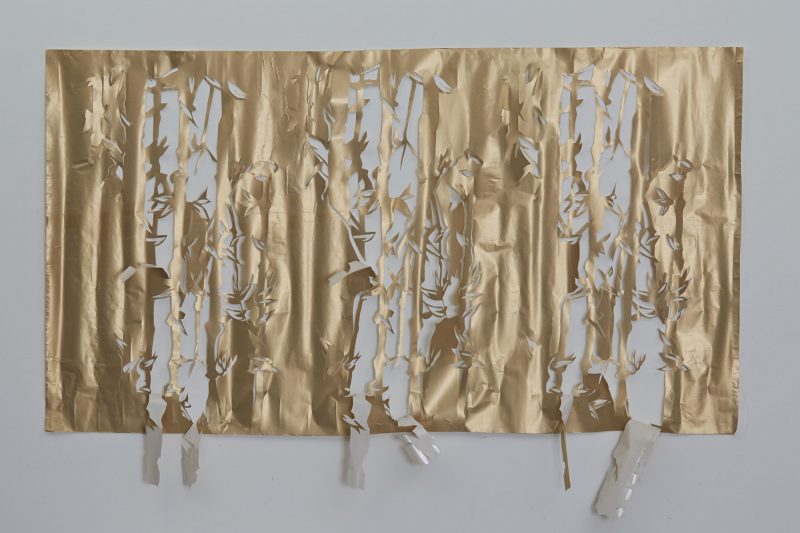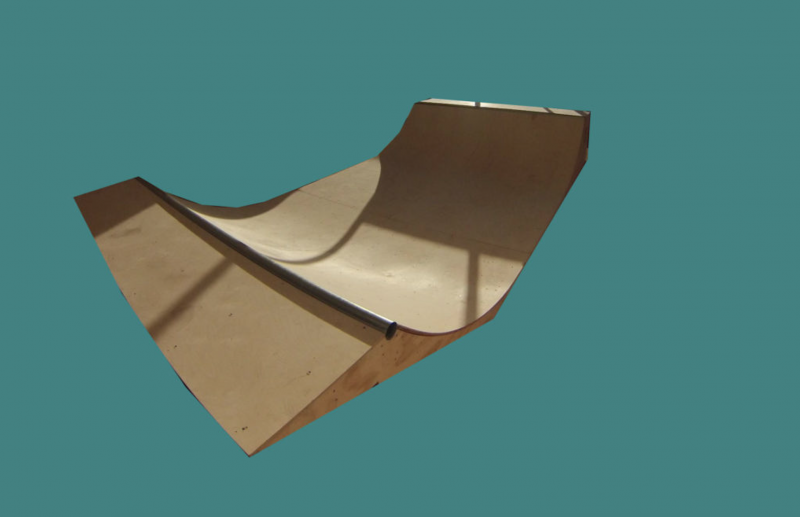This article first appeared in The Alt on June 29, 2018.
Photos provided by The Clark
In the very first video installation at The Clark Art Institute, projected animations of trees, flowers and leaves dance and curl themselves across the walls in a constant, looping video stream.
The exhibition space of the Lunder Center at Stone Hill features five unique but complementary works by the Los Angeles-based artist Jennifer Steinkamp that mimic the patterns and cycles of nature and the way they relate to life and death. One room is solely dedicated to the exhibit’s namesake, Blind Eye, an exclusive piece of digital art that has been carefully crafted to interact with the environment surrounding the Williamstown museum. In the other room, viewers find themselves completely surrounded.

Entering the space, Diaspore immediately catches the eye. Webbing branches and clusters of graphic flowers and seeds tumble across the screen, bumping along and colliding as they go. Set against the background of the wall, the brilliant varied colors of the projection is enthralling. Occasionally, a viewer’s shadow interrupts it, contributing to the chaos. The piece is named both for the plants which disperse spores in order to breed as well as the social diaspora, or the distribution of people and cultures across the world.
Fly to Mars features two uprooted trees floating in thin air as they simultaneously undergo the seasonal flowering and withering of their foliage. They bend and buckle in a mad loop. The more you observe their dance, the more they appear as a pair of Whomping Willows shaking themselves free.
In the carefully detailed and dimensional Premature, the artist comes to terms with stress and fragility of the body.
“I found out I had a blood condition which could be horrible but maybe not, so it freaked me out, so in that sense I made this piece,” the artist explained.

From one perspective, the tangled strands liken themselves to tendrils of meat or intestines, curling in on themselves in rumbling tremors. From another, the multi-colored pieces of computer-generated tube twist like an intricate, 3D, abstract work of graffiti art. This piece seems to be the most open to interpretation and is just as entrancing as the rest of the exhibit.
Rapunzel wraps the viewer back up into the abstract natural world in its delicate, cartoonish flowers which bob from a wall of flowing vines the artist has crafted using the same animation algorithm that simulates hair. The result is a gracefully swaying work that calms the mind. But the artist’s inspiration draws from something a little darker– a reference to the Grimm’s fairy tale in which a husband steals blooms from a neighboring witch’s garden for his pregnant wife who had become obsessed with the flowers. As punishment, they are forced to trade their newborn daughter for a supply. Steinkamp has likened this to a more modern, and real, issue of children who are given up by parents suffering from addiction.
The largest work, Blind Eye, was literally made for this space. The video loop of blooming and dying birch trees floats without a sky or forest floor, contrast to the perpendicular floor-to-ceiling window of the exhibition space where a gentle breeze shakes the leaves of firmly planted trees. It’s almost jarring. The tree trunks of Blind Eye bend and dance, their branches bunching up like a clenched fist and releasing with an outpouring of leaves.
“There’s a little choreography going on… it’s meant to be subtle,” Steinkamp said. “When you spend time in here and then you go outside, it’ll feel a little different. I think working with 3D graphics makes you rethink the real world.”

There are 72 birch trees depicted here, in heavily layered textures and separated subtly by three layers, which shed their leaves at different rate to keep the eye busy. One loses track of the repetitive loop as the eyes follow waves of bloom and decay, much like in Fly to Mars, as the misplaced forest sways in a constant gust of wind.
“It’s about monocular vision, when you close your eye you don’t see receding perspective the same way. In this piece, perspective is created by layering and value and speed. The trees further back, the leaves fall faster than the leaves in the foreground, to imply depth,” the artist said. “My entire life, I’ve been fascinated by perspective.”
Steinkamp’s exhibit visualizes the most characteristic aspects of our natural world, the pinpoints of our memory on loop. They way we admire the changing colors of the seasons, the silent rush of leaves being brushed up and away in the wind. It also takes on the deep connection between humanity and nature–the way we tense and furl under stress, the way we try to protect ourselves and hide away and the way we finally release and let go.
“It’s always bringing something to life in a certain way but not simulating life. These are representations, they’re not meant to be completely realistic,” she said. “They come from a person making them. I want that feeling.”
Jennifer Steinkamp: Blind Eye is on exhibition from June 30 to October 8 at The Clark Art Institute, Williamstown, Mass.





